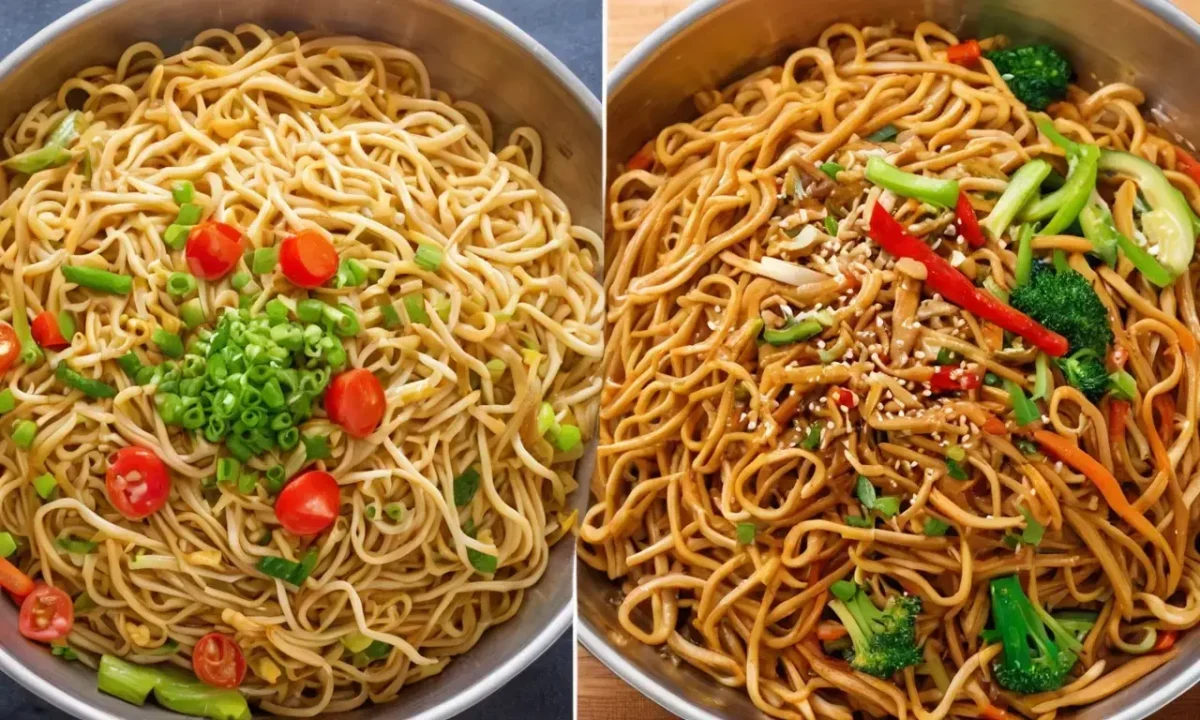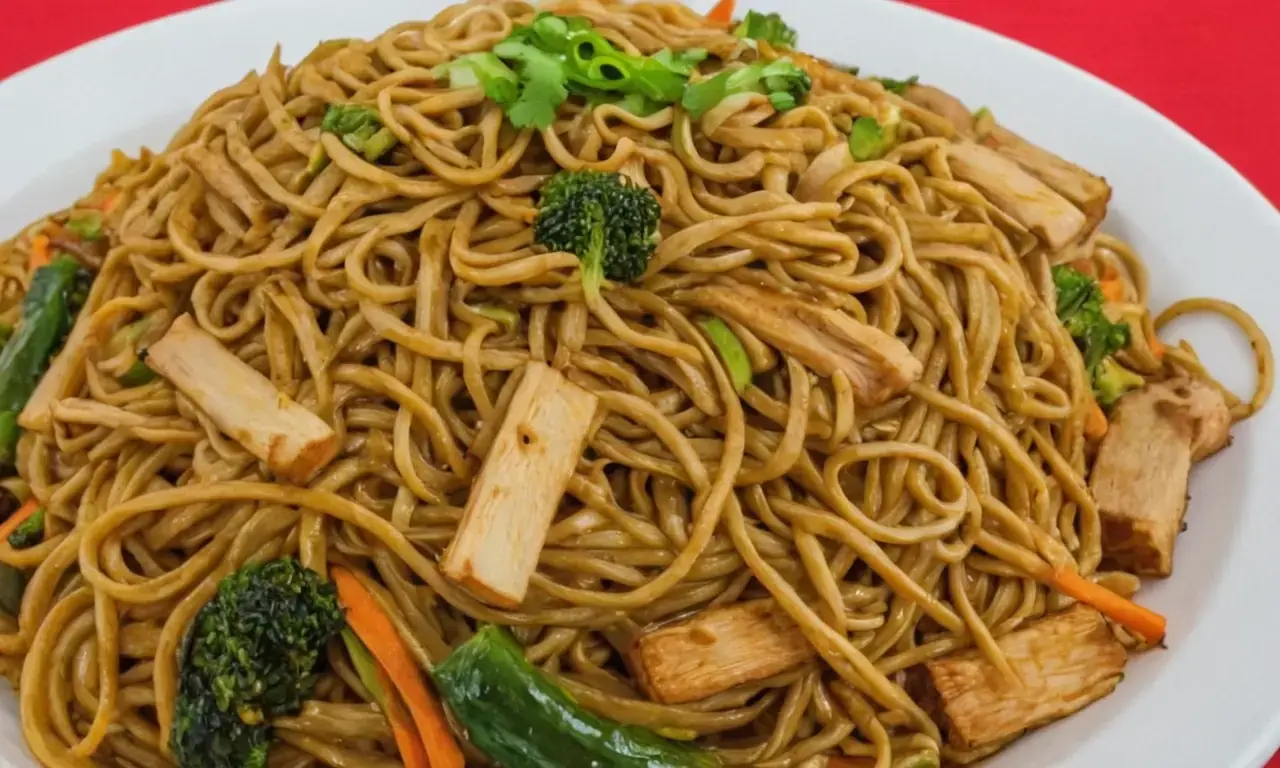
Chow Mein vs Lo Mein: Noodle Dishes of Distinction

Chow mein and lo mein are two popular Chinese noodle dishes that have gained worldwide recognition. Chow mein is a classic dish consisting of cooked noodles tossed with various ingredients such as vegetables, meats, and sometimes seafood in a savory sauce. The name "chow mein" translates to "fried noodles," reflecting its stir-frying cooking process which results in a slightly crispy texture. In contrast, lo mein features soft and chewy noodles made from wheat flour and egg, typically steamed before being tossed with ingredients in a flavorful sauce. While both dishes share similarities, their textures and flavors differ significantly, making them distinct choices for Chinese cuisine enthusiasts.
The objective of this article is to delve into the differences between these two beloved noodle dishes, exploring their histories, textures, flavor profiles, cooking techniques, regional variations, cultural significance, nutritional aspects, and pairing suggestions. By examining each aspect in detail, we will uncover what sets lo mein vs mei fun apart from one another.
History of Chow Mein
Chow mein has a rich history that dates back to the early 20th century when Chinese immigrants brought their culinary traditions to the United States. Initially, chow mein was a dish made with stir-fried noodles and vegetables, but over time it evolved to include various meats and seafood. The name "chow mein" is believed to have originated from the Cantonese dialect, where "chow" means "stir-fry" and "mein" refers to noodles.
In the early days of Chinese-American cuisine, chow mein was a staple in many restaurants, often served as a main course. Its popularity soared due to its ease of preparation and versatility with various ingredients. Today, chow mein remains a beloved dish worldwide, with numerous variations and interpretations that cater to diverse tastes.
Origins of Lo Mein
Lo mein, on the other hand, has its roots in traditional Chinese cuisine, particularly in the southern province of Guangdong. The name "lo mein" translates to "tossed noodles," reflecting the method of cooking where noodles are steamed before being tossed with ingredients in a sauce. Unlike chow mein, lo mein is typically made with soft and chewy noodles that have been cooked separately from the sauce.
Lo mein has its origins in traditional Cantonese cuisine, where it was served as a simple yet satisfying meal. The dish gained popularity in the United States during the mid-20th century, particularly among Chinese-American communities who adapted their recipes to suit local tastes. Today, lo mein is enjoyed not only in China but also globally, with various regional twists and interpretations.
Texture Comparison
One of the most noticeable differences between chow mein and lo mein lies in their textures. Chow mein noodles are typically stir-fried until they have a slightly crispy texture on the outside while remaining soft within. This contrast in texture adds depth to the dish, making it appealing to those who enjoy a mix of crunch and chewiness.
In contrast, lo mein noodles are steamed before being tossed with ingredients, resulting in a softer and more uniform texture throughout. The steaming process gives lo mein its signature chewy quality that many people find comforting and satisfying. This difference in texture is one of the key factors that sets these two dishes apart from each other.
Flavor Profiles

The flavor profiles of chow mein and lo mein also differ significantly, reflecting their distinct cooking methods. Chow mein often features a savory sauce made with soy sauce, oyster sauce (in some variations), and sometimes hoisin sauce. The stir-frying process allows the flavors to meld together quickly, resulting in a bold and aromatic taste.
Lo mein, on the other hand, typically has a lighter flavor profile compared to chow mein. Its steaming method allows for a more subtle infusion of flavors from the ingredients into the noodles. Lo mein often features a sauce made with soy sauce, sesame oil, and sometimes vegetables like cabbage or carrots. The overall taste is milder and fresher than that of chow mein.
Ingredients Used in Chow Mein
Chow mein can be customized with a wide variety of ingredients depending on regional preferences and personal tastes. Common additions include vegetables such as bean sprouts, cabbage, and carrots; meats like beef, chicken, or pork; and sometimes seafood like shrimp or squid. The choice of sauce also varies widely, from traditional soy-based sauces to more modern adaptations featuring hoisin or oyster sauce.
The versatility of chow mein is one of its greatest strengths, allowing it to be adapted to suit different cuisines and dietary preferences. In some variations, chow mein may include additional ingredients like peanuts or cashews for added crunch and flavor.
Ingredients Used in Lo Mein
Lo mein, while also versatile, tends to feature a more traditional set of ingredients compared to chow mein. The dish often includes soft noodles made from wheat flour and egg, steamed vegetables such as cabbage and carrots, and sometimes meat like beef or pork. Unlike chow mein, lo mein typically does not include stir-fried ingredients; instead, the focus is on the quality of the sauce and the freshness of the vegetables.
The choice of protein in lo mein can vary depending on regional preferences, but it's less common to find seafood or a mix of meats as seen in some chow mein variations. The simplicity of lo mein allows for a cleaner flavor profile that highlights the natural taste of the ingredients used.
Cooking Techniques
Another significant difference between chow mein and lo mein lies in their cooking techniques. Chow mein is typically stir-fried, which involves quickly sautéing the noodles with various ingredients over high heat. This method results in a dish that's both flavorful and textured, with the noodles retaining some crunch from the frying process.
Lo mein, on the other hand, is steamed before being tossed with sauce and ingredients. The steaming process ensures that the noodles are cooked evenly without losing their texture or flavor. This technique allows for a more delicate presentation of the dish, making it appealing to those who prefer a lighter taste experience.
Regional Variations
Both chow mein and lo mein have undergone regional adaptations over time, reflecting local tastes and preferences. In China, particularly in the southern provinces, lo mein is often served with a variety of vegetables and sometimes meat, showcasing its traditional roots. In contrast, chow mein has been adapted to suit different cuisines worldwide, incorporating local ingredients and flavors.
In the United States, for example, chow mein is commonly found on menus in Chinese-American restaurants, where it's often served with a mix of vegetables and meats. The dish has also gained popularity in other parts of Asia, where variations featuring unique ingredients like kimchi or spicy sauces have become popular.
Cultural Significance
Chow mein and lo mein hold significant cultural importance within the Chinese community. Both dishes are staples at family gatherings and special occasions, symbolizing unity and tradition. In many Chinese households, cooking these dishes is a way to connect with heritage and pass down recipes from generation to generation.
The cultural significance of chow mein and lo mein extends beyond China as well. They have become integral parts of international cuisine, representing the diversity and adaptability of Chinese food worldwide. The popularity of these dishes has also led to their inclusion in various festivals and celebrations, further solidifying their place in global culinary traditions.
Conclusion
Chow mein and lo mein are two distinct yet delicious dishes that showcase the versatility and richness of Chinese cuisine. From their textures and flavor profiles to their cooking techniques and regional adaptations, each dish offers a unique experience for those who enjoy exploring different cultures through food. Whether you prefer the bold flavors of chow mein or the simplicity of lo mein, both dishes are sure to leave a lasting impression on your palate.
In conclusion, while both chow mein and lo mein share some similarities in their origins and ingredients, their differences in texture, flavor profile, cooking techniques, and cultural significance set them apart as distinct culinary experiences. Whether you're a food enthusiast or simply looking for new dishes to try, exploring the world of chow mein and lo mein is sure to be a rewarding journey.
I hope this helps! Let me know if you have any other questions or need further clarification on anything.
Leave a Reply





Related Links